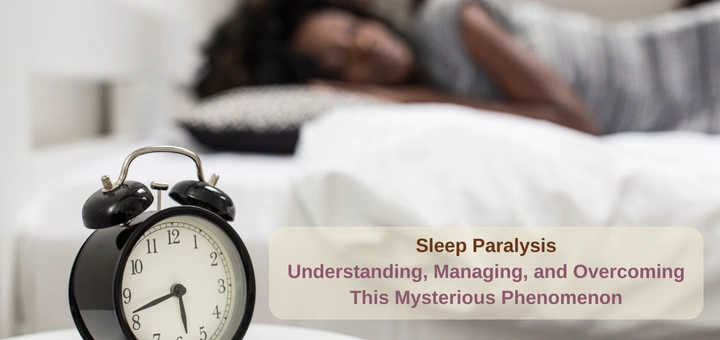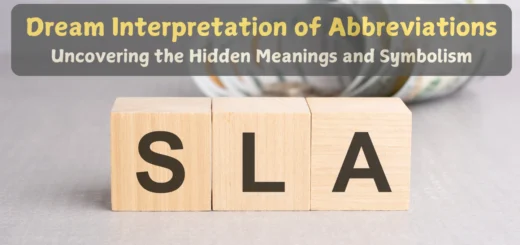Sleep paralysis is a relatively common yet often unsettling experience where you find yourself temporarily unable to move or speak while falling asleep or waking up. This phenomenon can feel frightening, especially when accompanied by vivid hallucinations. However, understanding what sleep paralysis is, why it happens, and how you can manage it will not only help ease your anxiety but also empower you to take steps toward more restful, fear-free sleep.

What Is Sleep Paralysis?
Sleep paralysis occurs when parts of the brain responsible for dreaming remain active while the rest of the body is still transitioning between wakefulness and sleep. During Rapid Eye Movement (REM) sleep, your brain naturally paralyzes most of your muscles to prevent you from acting out your dreams. In a normal sleep cycle, this temporary muscle atonia stops by the time you become consciously aware. When sleep paralysis happens, you wake up mentally but your body remains locked in REM-induced paralysis for a brief period.
As a result, you may feel as if you are trapped in your body—fully aware of your surroundings yet incapable of making even the slightest movement. This can last anywhere from a few seconds to a couple of minutes. While this experience can feel deeply unsettling, it is not physically harmful, and you will regain the ability to move and speak naturally once the episode concludes.
Common Symptoms of Sleep Paralysis
The main symptom of sleep paralysis is the inability to move or speak despite being awake. Many individuals also report additional experiences such as:
- A sense of pressure on the chest, as if someone is sitting on you
- Feeling intense fear or panic
- Hearing strange sounds such as humming, buzzing, or whispering
- Seeing shadowy figures or experiencing the sensation that someone is in the room
- Vivid visual hallucinations that may reflect dream content
It’s important to remember that although these sensations can be distressing, they are hallmarks of the brain’s sleep state overlapping with conscious awareness, not evidence of a supernatural presence or actual danger.
Why Does Sleep Paralysis Occur?
Researchers are still unraveling the exact causes of sleep paralysis, but several factors are known to increase its likelihood. Understanding these triggers can help you reduce episodes and improve your sleep quality:
- Irregular Sleep Schedules: Frequently changing your bedtime or sleeping in short bursts can disrupt your normal sleep patterns, making it more likely that you experience an overlap between REM sleep and wakefulness.
- Sleep Deprivation: Not getting enough sleep, especially over prolonged periods, increases your risk of experiencing sleep disturbances, including sleep paralysis.
- Stress and Anxiety: Emotional distress, chronic stress, and anxiety can all contribute to disturbed sleep and the likelihood of sleep disruptions.
- Sleeping Position: Some individuals find that sleeping on their back is associated with more frequent episodes of sleep paralysis, though this may not apply to everyone.
- Underlying Sleep Disorders: Conditions like narcolepsy or other REM sleep-related issues can predispose you to episodes of paralysis.
For many people, sleep paralysis is a one-off or occasional event. For others, it can occur more frequently, especially if the underlying factors (like poor sleep hygiene or high stress) are not addressed.
Is Sleep Paralysis Harmful?
It’s understandable to worry about the potential dangers of sleep paralysis, especially if you’ve just experienced it for the first time. The good news is that while it can be extremely frightening, it is not physically dangerous. The paralysis is temporary and will pass, usually within seconds or minutes.
However, the fear and confusion that often accompany episodes can have an emotional toll. Repeated episodes may lead to anxiety surrounding sleep, making it more challenging to relax and drift off at night. In some cases, fear of having another episode can create a vicious cycle that disrupts overall sleep quality.
Managing and Reducing Sleep Paralysis Episodes
If you find sleep paralysis distressing, there are steps you can take to reduce its frequency and intensity:
1. Improve Your Sleep Hygiene
Setting a consistent sleep schedule can be a powerful way to regulate your sleep-wake cycle. Aim to go to bed and wake up at the same times each day, even on weekends. Ensure your bedroom environment is conducive to restful sleep by keeping it dark, quiet, and cool. Reducing exposure to screens before bed can also help you fall asleep more easily.
2. Address Stress and Anxiety
Stress management plays a crucial role in preventing sleep paralysis. Incorporate relaxation techniques such as deep breathing exercises, meditation, or gentle yoga into your bedtime routine. If persistent anxiety is contributing to disturbed sleep, consider speaking with a mental health professional for personalized support and coping strategies.
3. Adjust Your Sleeping Position
Some individuals experience fewer episodes of sleep paralysis when they avoid sleeping on their back. Experimenting with side sleeping may help reduce episodes. Try using supportive pillows or specialized cushions to maintain a comfortable, non-supine position throughout the night.
4. Maintain a Healthy Lifestyle
Lifestyle factors can influence the frequency and intensity of sleep paralysis. Incorporate regular exercise into your routine and maintain a balanced diet. Limit intake of caffeine, nicotine, and alcohol, especially close to bedtime, as these substances can disrupt sleep patterns. Good overall health can have a surprisingly positive impact on your sleep and help prevent unwanted sleep disturbances.
5. Keep a Sleep Diary
If sleep paralysis episodes persist, consider keeping a detailed sleep diary. Document the times you go to bed and wake up, your mood, what you ate and drank before sleep, and any notable events or stressors from the day. Over time, patterns may emerge that give you clues about potential triggers. Identifying these triggers can help you make targeted changes, ultimately reducing episodes.
Overcoming the Fear of Sleep Paralysis
The fear and anxiety that often accompany sleep paralysis can be more challenging than the episodes themselves. Learning to cope with these emotions can help you feel more in control:
- Education: The more you understand about this phenomenon, the less frightening it becomes. Knowing that it’s a natural—albeit disorienting—part of the sleep process can help reduce panic during an episode.
- Mindfulness: Practicing mindfulness techniques can help you remain calm when you feel yourself entering or experiencing sleep paralysis. Focus on slow, steady breathing, and remind yourself that this state is temporary and will pass.
- Positive Self-Talk: Reassuring yourself during an episode can reduce fear. Mentally repeating phrases like “I am safe,” “This will end soon,” or “I know what this is” can lessen the emotional intensity of the experience.
- Seeking Professional Help: If fear or anxiety about sleep paralysis is interfering with your life, consider reaching out to a therapist or counselor. Professional guidance can help you develop coping strategies and address any underlying emotional concerns.
When to Seek Professional Help
In most cases, sleep paralysis is infrequent and manageable with simple lifestyle adjustments. However, if your episodes become more frequent, last longer, or cause significant distress, it may be time to seek professional help. A sleep specialist or a mental health professional can assess for underlying sleep disorders, recommend personalized treatments, or provide therapy to address anxiety around sleep. If sleep paralysis is impacting your well-being, you don’t have to face it alone.
Empowering Yourself Through Knowledge and Action
While the experience of sleep paralysis can be unsettling, it’s important to remember that knowledge is power. Understanding what’s happening in your body during these episodes, recognizing common triggers, and implementing practical strategies can help you regain a sense of control over your sleep. By taking proactive steps—such as improving your sleep hygiene, managing stress, adjusting your sleeping position, and seeking professional advice when necessary—you’re well on your way to peaceful, restorative rest.
The journey toward better sleep may take time, patience, and a willingness to try different approaches. However, with consistent effort, you can reduce the frequency and intensity of sleep paralysis, turning an unsettling sleep disturbance into a manageable part of your life’s narrative.














